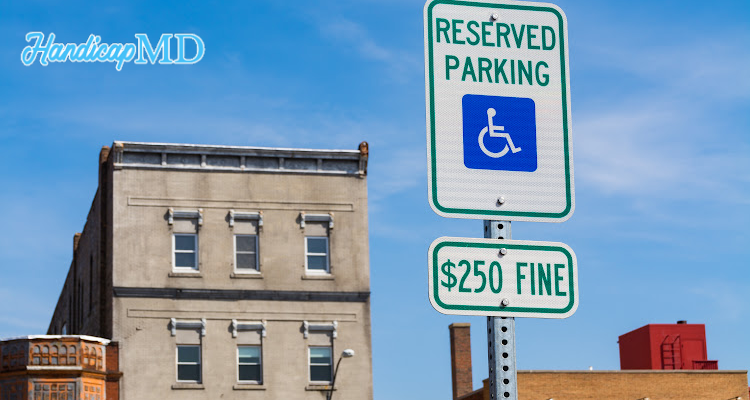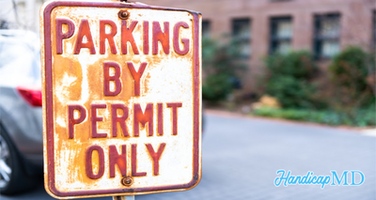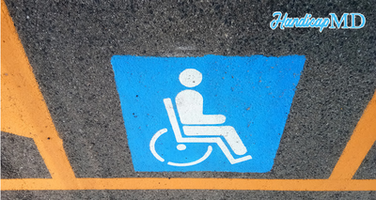
Unveiling the Rules and Regulations of Using a Handicap Placard in Connecticut
Introduction
Using a handicap placard in Connecticut can provide individuals with mobility challenges the much-needed accessibility and convenience they deserve. However, it's essential to understand the rules and regulations associated with the permit's use to ensure proper compliance. This comprehensive guide aims to unveil everything you need to know about using a permit in Connecticut, from the application process to displaying it correctly. Whether you're a resident, visitor, or caregiver, this article will empower you with accurate and relevant information to navigate the process effortlessly.
Unveiling the Rules and Regulations of Using a Handicap Placard in Connecticut
In this section, we'll delve into the specific rules and regulations surrounding the use of a handicap permit in Connecticut. Understanding these guidelines is crucial for ensuring a seamless experience while benefiting from the placard's privileges.
Eligibility Requirements
To qualify for a permit in Connecticut, applicants must meet specific eligibility criteria. These criteria typically revolve around mobility limitations, visual impairments, or other conditions that affect a person's ability to walk. The Connecticut Department of Motor Vehicles (DMV) thoroughly assesses applications to ensure that placards are provided to those who genuinely require them.
Types of Permits Available
Connecticut offers different types of placards, each with varying validity periods. The two main types are temporary and permanent. Temporary ones are issued to individuals with short-term mobility issues, while permanent ones are for those with long-term or permanent disabilities. Understanding the distinction between the two is crucial for obtaining the appropriate placard that aligns with your needs.
Applying for a Handicap Placard
The application process in Connecticut involves submitting relevant medical documentation to the DMV. This documentation should verify the applicant's disability and eligibility for it. The DMV reviews the application and, upon approval, issues the permit. We recommend preparing all necessary documents beforehand to expedite the application process.
Displaying the Placard
Once you've obtained a permit, it's essential to display it correctly while using a designated accessible parking spot. Connecticut regulations require the sign to be hung from the rear-view mirror when the vehicle is parked. Never drive with sign hanging, as it may obstruct your view and lead to safety concerns.
Renewals
Handicap permits have specific expiration dates, depending on their type. Temporary ones usually have shorter validity periods, while permanent ones may last for several years. It's essential to keep track of the expiration date and renew on time to ensure continuous accessibility benefits.
Proper Use of Designated Spaces
When using designated parking spaces, it's crucial to abide by the designated time limits, if any. Misusing these spots may lead to fines or penalties. Always display the disability sign when occupying a designated space, and remove it when the vehicle is in motion.
Misuse and Penalties
Misusing a permit or allowing others to use it fraudulently is strictly prohibited in CT. Authorities enforce severe penalties for such offenses, as they compromise accessibility for individuals who genuinely need the spaces.
Parking Permits for Out-of-State Visitors
If you have an out-of-state pass, CT generally recognizes it. However, it's essential to check with the local DMV to understand specific requirements or restrictions for out-of-state pass holders.
Accessibility in Public Spaces
CT strives to provide accessible facilities and services for individuals with disabilities. Public spaces, including buildings, parks, and recreational areas, must comply with accessibility guidelines to ensure inclusivity and equal opportunities.
Special Considerations for Caregivers
Caregivers of individuals with disabilities may use the handicap placard when transporting the person with the disability. However, it's crucial to remember that it should only be used when the person with the disability is present.
Resources for Accessibility Assistance
CT offers various resources and support services for individuals with disabilities and their caregivers. These resources can provide valuable assistance in navigating daily life and accessing essential facilities and programs.
Rights of Disability Tag Holders
Authorized holders in Connecticut have specific rights, including accessible parking and other privileges. Understanding these rights is vital for confidently utilizing the permit and advocating for accessibility.
Expiration and Replacement
If your permit is lost, stolen, or damaged, it's crucial to report it to the DMV and request a replacement. This process ensures that unauthorized individuals cannot misuse it and helps you maintain your accessibility benefits.
Temporary Placard Extensions
In certain situations, such as medical procedures or prolonged recovery periods, individuals with temporary permit may need extensions. The DMV allows for temporary extensions to accommodate such circumstances.
The Role of Healthcare Providers
Healthcare providers play a significant role in the application process. Their medical documentation is essential in determining an individual's eligibility and ensuring that passes are provided to those who genuinely require them.
Addressing Accessibility Challenges
Despite the efforts to create an accessible environment, some areas may still pose challenges to individuals with disabilities. Advocacy and community engagement can help address these issues and promote greater accessibility.
Placard Fraud Prevention
To combat fraud and misuse, CT's DMV takes fraud seriously. Stringent measures are in place to detect and prevent fraudulent activities, ensuring that passes are rightfully issued to eligible individuals.
Understanding Federal and State Laws
In addition to CT's specific regulations, it's essential to be aware of federal laws, such as the Americans with Disabilities Act (ADA). Familiarizing yourself with these laws further empowers you to assert your rights and access necessary accommodations.
Making Connecticut More Accessible
CT continues to work towards creating a more inclusive and accessible environment for all its residents and visitors. Active participation in promoting accessibility can contribute to a positive change in the community.
Public Awareness and Education
Public awareness campaigns and educational initiatives play a vital role in promoting understanding and empathy towards individuals with disabilities. These efforts foster a more inclusive society and combat stigma.
Placard Application Assistance
For individuals who may face challenges during the application process, various organizations and support groups offer assistance. They can guide applicants through the paperwork and requirements, ensuring a smoother experience.
Adapting to Changing Needs
Individuals with disabilities may experience changes in their mobility over time. As such, it's essential to reevaluate the need for a disability permit periodically and make necessary adjustments.
Enhancing Mobility Independence
A disability permit can significantly enhance an individual's mobility independence. By providing access to designated parking spaces, it enables individuals to participate more fully in various activities.
Advocacy for Accessibility
Advocacy efforts for accessibility extend beyond individuals with disabilities; friends, family members, and the broader community can all play a role in creating a more inclusive society.
FAQs
What documentation do I need to apply for a disability pass in CT?
- To apply for a pass in CT, you typically need medical documentation from a licensed healthcare provider confirming your disability and eligibility. The specific requirements may vary, so it's best to consult the DMV or their official website for the most up-to-date information.
Can I use my out-of-state disability pass in CT?
- In most cases, CT recognizes out-of-state passes. However, it's essential to verify the specific rules and regulations with the local DMV to ensure compliance.
How long does a disability pass last in CT?
- Disability passes in CT come in two types: temporary and permanent. Temporary ones usually have shorter validity periods, while permanent ones may last for several years. The duration depends on the type issued.
Can caregivers use the pass without the person with the disability present?
- No, caregivers can only use the pass when transporting the person with the disability. It should not be used when the person it's intended for is not present.
What should I do if my pass is lost or stolen?
- If your pass is lost, stolen, or damaged, report it to the DMV immediately and request a replacement. This helps prevent unauthorized use of the pass and ensures that you can continue to use it lawfully.
Are there any penalties for misusing a pass in CT?
- Yes, CT enforces severe penalties for misusing a pass or allowing others to use it fraudulently. These penalties are in place to protect the accessibility privileges of those who genuinely need them.
Conclusion
Unveiling the rules and regulations of using a handicap placard in Connecticut is essential for individuals seeking accessibility benefits. By adhering to these guidelines, applicants can obtain the right placard and enjoy the privileges it offers. Moreover, promoting accessibility awareness and advocating for inclusivity can contribute to a more compassionate and understanding society.
.png)






